List of presidents of the Indian National Congress
The Indian National Congress is a political party in India with widespread roots.[1] Founded in 1885, it was the first modern nationalist movement to emerge in the British Empire in Asia and Africa.[lower-alpha 1][2] From the late 19th century, and especially after 1920, under the leadership of Mahatma Gandhi, Congress became the principal leader of the Indian independence movement. Congress led India to independence from Great Britain,[lower-alpha 2][3][lower-alpha 3][4] and powerfully influenced other anti-colonial nationalist movements in the British Empire.[lower-alpha 4][2]
| President of the Indian National Congress | |
|---|---|
| Type | political office |
| Residence | 24, Akbar Road, New Delhi-110001 |
| Appointer | consisting the members of the Indian National Congress from the National and State Committees |
| Term length | no term limit |
| Constituting instrument | Constitution of the Indian National Congress |
| Formation | April 1885 |
| First holder | Womesh Chunder Bonnerjee (1885–1886) |
| Website | www |
Congress is a secular party whose social democratic platform is generally considered to be on the centre-left of Indian politics.[5] Congress' social policy is based upon the Gandhian principle of Sarvodaya—the lifting up of all sections of society—which involves the improvement of the lives of economically underprivileged and socially marginalised people.[6][7] The party primarily endorses social democracy—seeking to balance individual liberty and social justice, welfare and secularism. Its constitution states democratic socialism to be its ideal.[8]
After the party's foundation in 1885, Womesh Chunder Bonnerjee became its first president. A total of sixty one people have served as the president of the Indian National Congress.[9] Sonia Gandhi is the longest serving president of the Congress party, having held the office for nineteen years from 1998 to 2017.[10][11]
History
During 1885–1933, the presidency had a term of 1 year only. Traditionally, the post rotated between prominent members of the party, successive terms for the same person being frowned upon. During Jawaharlal Nehru's premiership, he rarely held the Presidency of INC, even though he was always head of the Legislative Party.[12]
Indira Gandhi however, institutionalized the practice of having the same person as the Congress President and the Prime Minister of India after she formed Congress (I) in 1978. Her son Rajiv Gandhi continued that practice.[13][14]
P. V. Narasimha Rao too held both the Congress (I) President and the Prime Minister's posts. Sitaram Kesri held the post after INC was voted out. But as the party never returned to power under his leadership, he didn't hold the two posts together.[15]
During 2000–09, INC did not host a conference for the first time in history. In 2004, when the INC was voted back into power, Manmohan Singh became the first Prime Minister, not to be the president of the party since Indira Gandhi established the practice of the president holding both positions. Sonia Gandhi is the longest serving president of the Congress party, having held the office for nineteen years from 1998 to 2017.[10][11] Her son Rahul Gandhi, the last Congress President, resigned from the post on 3 July 2019. On 10 August, the Congress Working committee, elected Sonia Gandhi as the interim President. The decision led to critics saying that the Gandhi family is refusing to loosen its grip on the party’s internal power structures.[16]
List of party presidents
| No. | Year of Presidency | Name of President | Presided Session at Location | Picture | Life span (Notes) |
|---|---|---|---|---|---|
| 1 | 1885 | Womesh Chunder Bonnerjee | Bombay | 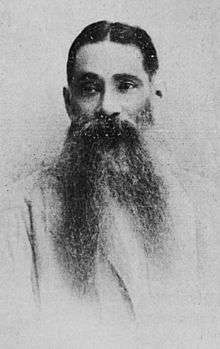 |
29 December 1844 – 19 August 1906
A barrister who was the co-founder and first president of Indian National Congress presiding over its first session.[17] |
| 2 | 1886 | Dadabhai Naoroji | Calcutta | 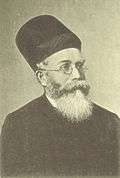 |
4 September 1825 – 30 June 1917 He was also a member of the Indian National Association founded by Sir Surendranath Banerjee from Calcutta a few years before the founding of the INC in Bombay, with the same objectives and practices.[18] The two groups later merged into the INC, and Naoroji was elected President of the Congress in 1886. Naoroji published Poverty and un-British Rule in India in 1901.[18] |
| 3 | 1887 | Badruddin Tyabji | Madras | 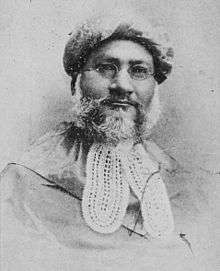 |
10 October 1844 – 1906 Tyabji was considered a moderate Muslims during the freedom movement of India.[19] He was instrumental in building the national scope of the Congress by working to gain support from both Hindus and Muslims and during his time as President, he focused on uniting the Muslim community.[20] In response to criticisms that Muslims should boycott the Congress, Tyabji declared that he had denounced all communal and sectarian prejudices.[21][22] |
| 4 | 1888 | George Yule | Allahabad | 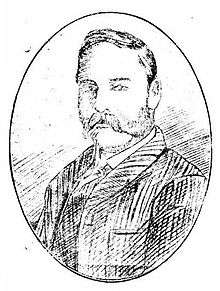 |
1829–1892 A Scottish merchant who served as the fourth President of the Congress and the first non-Indian to hold that office.[23] He was founder of George Yule & Co. of London, and headed Andrew Yule & Co., of Calcutta. He served as Sheriff of Calcutta and as President of the Indian Chamber of Commerce. |
| 5 | 1889 | William Wedderburn | Bombay | 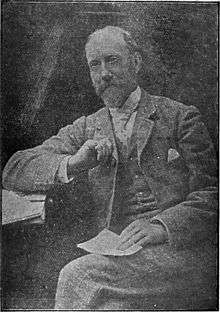 |
25 March 1838 – 25 January 1918 He joined the Indian Civil Service in Bombay and retired as acting Chief Secretary to the Government of Bombay in 1887. He served as its president in 1889 and 1910. He worked along with influential Congress leaders in Bombay and in 1890 he chaired the British committee of the Indian National Congress. He contributed to the Indian Reform Movement through which he promoted national consciousness.[24] |
| 6 | 1890 | Pherozeshah Mehta | Calcutta |  |
4 August 1845 – 5 November 1915 |
| 7 | 1891 | Anandacharlu | August 1843 – 1908 | ||
| 8 | 1892 | Womesh Chunder Bonnerjee |  |
29 December 1844 – 1906
Becoming a president for a second time[25] he denounced the position that India had to prove for worthiness of political freedom.[26] | |
| 9 | 1893 | Dadabhai Naoroji |  |
4 September 1825 – 1917 He became the president for a second time. Naoroji published Poverty and un-British Rule in India in 1901.[27] | |
| 10 | 1894 | Alfred Webb | 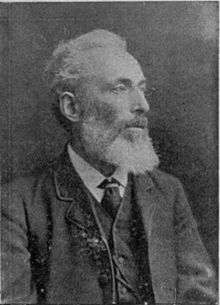 |
1834–1908 | |
| 11 | 1895 | Surendranath Banerjee | 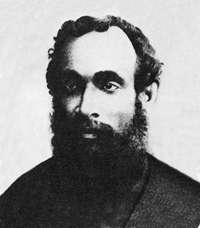 |
10 November 1848 – 6 August 1925 | |
| 12 | 1896 | Rahimtulla M. Sayani | Calcutta | 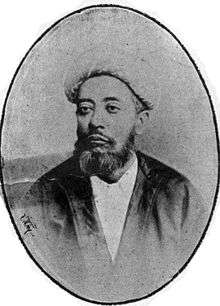 |
5 April 1847 – 6 June 1902 He was a member of the Congress Executive Committee (Indian Congress Committee) formed in 1899 as one of the representatives from Bombay. As Congress president, his address to the party was notable for its detailed look on the British rule's economic and financial aspects.[28] |
| 13 | 1897 | C. Sankaran Nair |  |
11 July 1857 – 24 April 1934 | |
| 14 | 1898 | Anandamohan Bose | 23 September 1847 – 20 August 1906 | ||
| 15 | 1899 | Romesh Chunder Dutt |  |
13 August 1848 – 1909 | |
| 16 | 1900 | N. G. Chandavarkar | 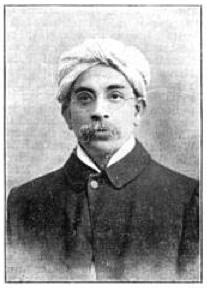 |
2 December 1855 – 1923 | |
| 17 | 1901 | Dinshaw Edulji Wacha |  |
2 August 1844 – 1936 | |
| 18 | 1902 | Surendranath Banerjee |  |
10 November 1825 – 1917 | |
| 19 | 1903 | Lalmohan Ghosh | 1848–1909 | ||
| 20 | 1904 | Henry Cotton | 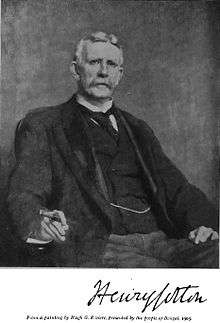 |
1845–1915 | |
| 21 | 1905 | Gopal Krishna Gokhale | Banaras | 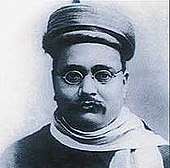 |
9 May 1866 – 1915 |
| 22 | 1906 | Dadabhai Naoroji | Calcutta |  |
4 September 1825 – 1917 He was elected president of the Congress for a third time. Naoroji was a staunch moderate within the Congress, during the phase when opinion in the party was split between the moderates and extremists. Naoroji was a mentor to Bal Gangadhar Tilak, Gopal Krishna Gokhale and Mohandas Karamchand Gandhi. |
| 23 | 1907 | Rashbihari Ghosh | Surat | 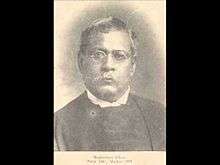 |
23 December 1845 – 1921 |
| 24 | 1908 | Rashbihari Ghosh | Madras |  |
23 December 1845 – 1921 |
| 25 | 1909 | Madan Mohan Malaviya | Lahore |  |
25 December 1861 – 1946 |
| 26 | 1910 | William Wedderburn |  |
1838–1918 He joined the Indian Civil Service in Bombay and retired as acting Chief Secretary to the Government of Bombay in 1887. He served as its president in 1889 and 1910. He worked along with influential Congress leaders in Bombay and in 1890 he chaired the British committee of the Indian National Congress. He contributed to the Indian Reform Movement through which he promoted national consciousness.[24] | |
| 27 | 1911 | Bishan Narayan Dar | Calcutta | 1864–1916 | |
| 28 | 1912 | Raghunath Narasinha Mudholkar | 1857–1921 | ||
| 29 | 1913 | Nawab Syed Muhammad Bahadur | ?–1919 | ||
| 30 | 1914 | Bhupendra Nath Bose |  |
1859–1924 | |
| 31 | 1915 | Lord Satyendra Prasanna Sinha | 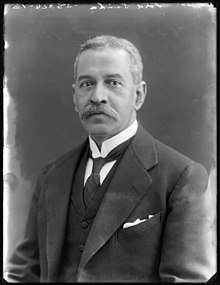 |
March 1863 – 1928 | |
| 32 | 1916 | Ambica Charan Mazumdar | Lucknow | 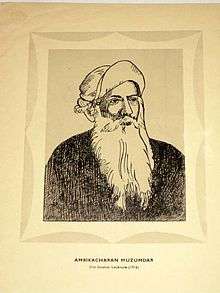 |
1850–1922 |
| 33 | 1917 | Annie Besant | Calcutta | 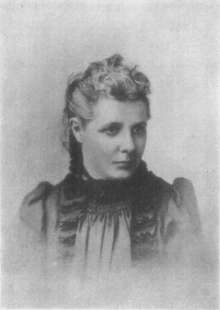 |
1 October 1847 – 1933 |
| 34 | 1918 | Madan Mohan Malaviya |  |
25 December 1861 – 1946 | |
| 35 | 1918 | Syed Hasan Imam | 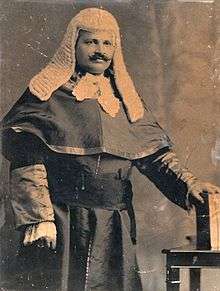 |
31 August 1871 – 1933 | |
| 36 | 1919 | Motilal Nehru | Amritsar | 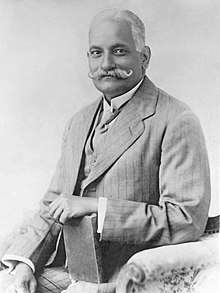 |
6 May 1861 – 6 February 1931 |
| 37 | 1920 | Lala Lajpat Rai | Calcutta (special session) |  |
28 January 1865 – 17 November 1928 |
| 38 | 1920 | C. Vijayaraghavachariar | Nagpur | 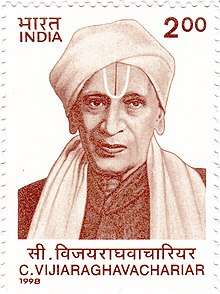 |
1852 – 19 April 1944 |
| 39 | 1921 | Chittaranjan Das (President)
Hakim Ajmal Khan (Acting President) |
Ahemdabad | 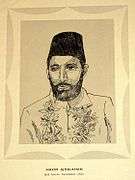 |
1863 – 29 December 1927 |
| 40 | 1922 | Chittaranjan Das | Gaya | 5 November 1870 – 16 June 1925 | |
| 41 | 1923 | Mohammad Ali Jouhar |  |
10 December 1878 – 4 January 1931 | |
| 42 | 1923 | Abul Kalam Azad | Delhi | 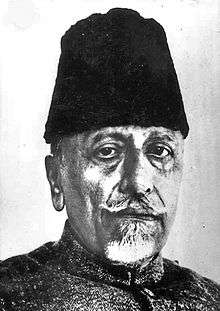 |
1888 – 22 February 1958 |
| 43 | 1924 | Mahatma Gandhi | Belgaum |  |
2 October 1869 – 30 January 1948 |
| 44 | 1925 | Sarojini Naidu | Kanpur | 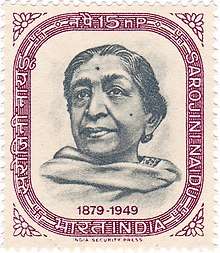 |
13 February 1879 – 2 March 1949 |
| 45 | 1926 | S. Srinivasa Iyengar |  |
11 September 1874 – 19 May 1941 | |
| 46 | 1927 | Mukhtar Ahmed Ansari | Madras | 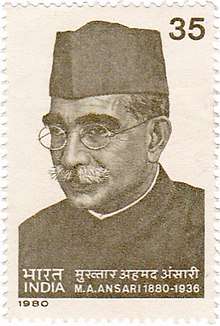 |
25 December 1880 – 10 May 1936 |
| 47 | 1928 | Motilal Nehru | Calcutta |  |
6 May 1861 – 6 February 1931 |
| 48 | 1929 & 30 | Jawaharlal Nehru | Lahore |  |
14 November 1889 – 27 May 1964 |
| 49 | 1931 | Vallabhbhai Patel | Karachi | .jpg) |
31 October 1875 – 15 December 1950 |
| 50 | 1932 | Madan Mohan Malaviya |  |
25 December 1861 – 1946 | |
| 51 | 1933 | Nellie Sengupta | 1886–1973 She was elected President by the party for her contribution to the party and the country. In 1933 and 1936, she was elected as an alderman in the Calcutta Corporation.[29] | ||
| 52 | 1934 & 35 | Rajendra Prasad | Bombay | %2C_signed_image_for_Walter_Nash_(NZ_Prime_Minister)%2C_1958_(16017609534).jpg) |
3 December 1884 – 28 February 1963 |
| 53 | 1936 | Jawaharlal Nehru | Lucknow and Faizpur |  |
14 November 1889 – 27 May 1964 |
| 54 | 1937 | ||||
| 55 | 1938 | Subhas Chandra Bose | Haripura | 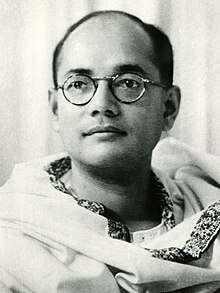 |
23 January 1897 – 18 August 1945 He had a view that the INC "should be organised on the boradest anti-imperialist front with the two fold objective of winning political freedom and the establishment of a socialist regime."[30] |
| 56 | 1939 | Subhas Chandra Bose (resigned) Rajendra Prasad replaced Bose after the session. |
Tripuri |  %2C_signed_image_for_Walter_Nash_(NZ_Prime_Minister)%2C_1958_(16017609534).jpg) |
23 January 1897 – 18 August 1945 |
| 57 | 1940–45 | Abul Kalam Azad | Ramgarh |  |
1888 – 22 February 1958 |
| 57 | 1946 | Jawaharlal Nehru |  |
14 November 1889 – 27 May 1964 One month after his election as the president, he was asked to head the Interim Government. After which the post of the party president and the head of the Interim government was split. Nehru resigned as the president of INC and headed the Government.[31] | |
| 58 | 1947 | J. B. Kripalani | Meerut | 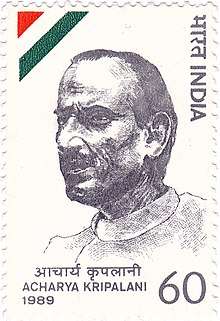 |
1888 – 19 March 1982 He had served as the General Secretary of the INC for almost a decade. He had experience working in the field of education and was made the president to rebuild the INC. Disputes between the party and the Government over procedural matters affected his relationship with the colleagues in the Government.[31] |
| 59 | 1948 & 49 | Pattabhi Sitaraimayya | Jaipur | 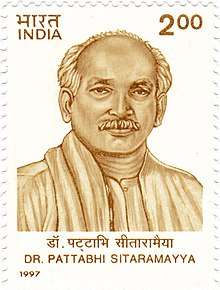 |
24 December 1880 – 17 December 1959
The Governor of Madhya Pradesh from 1952-57, Sitaraimayya successfully ran for the president’s post with the support of Jawaharlal Nehru. Sitaramayya was one of the leaders who demanded the need for a separate state that went on to become Andhra Pradesh. He founded the Andhra Bank in Machilipatnam in 1923. |
| 60 | 1950 | Purushottam Das Tandon | 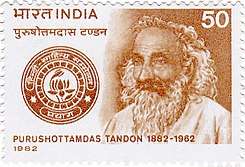 |
1 August 1882 – 1 July 1961
Tandon won against J.B Kripalani in the 1950 elections, but soon resigned from the post because of differences he had with Nehru. Tandon was also instrumental in making sure that Hindi received official language status. | |
| 61 | 1951 & 52 | Jawaharlal Nehru |  |
14 November 1889 – 27 May 1964 | |
| 62 | 1953 | ||||
| 63 | 1954 | ||||
| 64 | 1955 | U. N. Dhebar | 21 September 1905 – 1977
The Chief Minister of Saurashtra from 1948-54, Dhebar held a four-year term as Congress president. In 1962, he was elected to the Lok Sabha from Rajkot. | ||
| 65 | 1956 | ||||
| 66 | 1957 | ||||
| 67 | 1958 | ||||
| 68 | 1959 | ||||
| 69 | 1959 | Indira Gandhi | 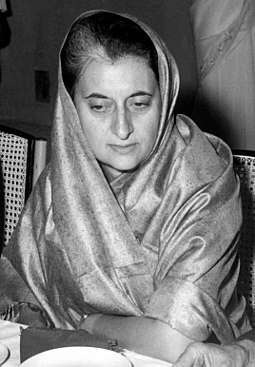 |
19 November 1917 – 31 October 1984 | |
| 70 | 1960 | Neelam Sanjiva Reddy | 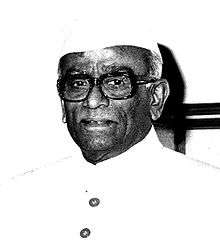 |
19 May 1913 – 1 June 1996
Reddy served as the Congress president thrice. After he lost the 1969 Presidential elections to V.V. Giri, he retired from active politics | |
| 71 | 1961 | ||||
| 72 | 1962 & 63 | ||||
| 73 | 1964 | K. Kamaraj |  |
15 July 1903 – 2 October 1975
The third Chief Minister of Madras State (Tamil Nadu), he was the leader of the Congress (O) when the party split up after Indira Gandhi's elevation to the presidency, a post he remained in until his death in 1975. Kamraj served as president from 1965-69. | |
| 74 | 1965 | ||||
| 75 | 1966 & 67 | ||||
| 76 | 1968–1969 | S. Nijalingappa | Hyderabad, Faridabad | 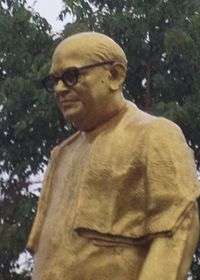 |
10 December 1902 – 9 August 2000
Nijalingappa was the last President of the undivided Congress party, and during the split, he ended up on the side of the Syndicate. He was elected to the first Lok Sabha from the Chitradurga constituency in 1952. |
| 77 | 1970 & 71 | Jagjivan Ram | 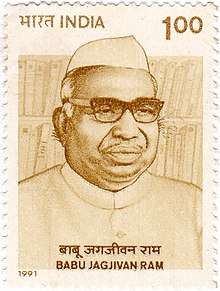 |
5 April 1908 – 6 July 1986
Ram was a president of the party between 1972-74. Later, he formed his own party, naming it Congress (J) and remained an MP until his death. | |
| 78 | 1972–74 | Shankar Dayal Sharma | 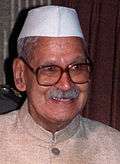 |
19 August 1918 – 26 December 1999 | |
| 79 | 1975–77 | Devakanta Barua | 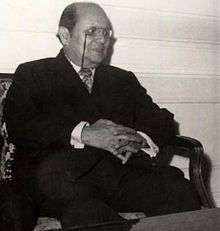 |
22 February 1914 – 1996 | |
| 80 | 1977–1978 | Kasu Brahmananda Reddy | 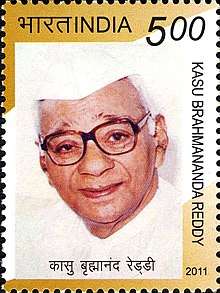 |
28 July 1909 – 20 May 1994 | |
| 81 | 1978–83 | Indira Gandhi |  |
19 November 1917 – 31 October 1984 | |
| 82 | 1983 & 84 | ||||
| 83 | 1985–91 | Rajiv Gandhi | .jpg) |
20 August 1944 – 21 May 1991 | |
| 84 | 1991–96 | P. V. Narasimha Rao | 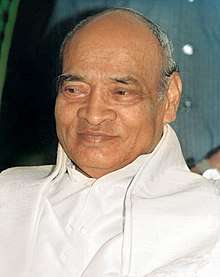 |
28 June 1921 – 23 December 2004 | |
| 85 | 1996–98 | Sitaram Kesri |  |
November 1919 – 24 October 2000 | |
| 86 | 1998–2017 | Sonia Gandhi | .jpg) |
9 December 1946 | |
| 87 | 2017–2019 | Rahul Gandhi | 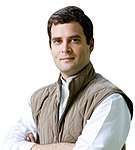 |
19 June 1970 | |
| 88 | 2019– | Sonia Gandhi | .jpg) |
9 December 1946[32] |
Notes
- "The first modern nationalist movement to arise in the non-European empire, and one that became an inspiration for many others, was the Indian Congress."[2]
- "South Asian parties include several of the oldest in the post-colonial world, foremost among them the 129-year-old Indian National Congress that led India to independence in 1947"[3]
- "The organization that led India to independence, the Indian National Congress, was established in 1885."[4]
- "... anti-colonial movements ... which, like many other nationalist movements elsewhere in the empire, were strongly infuenced by the Indian National Congress."[2]
References
- "Indian National Congress". Encyclopædia Britannica. Retrieved 26 February 2018.
- Marshall, P. J. (2001), The Cambridge Illustrated History of the British Empire, Cambridge University Press, p. 179, ISBN 978-0-521-00254-7
- Chiriyankandath, James (2016), Parties and Political Change in South Asia, Routledge, p. 2, ISBN 978-1-317-58620-3
- Kopstein, Jeffrey; Lichbach, Mark; Hanson, Stephen E. (2014), Comparative Politics: Interests, Identities, and Institutions in a Changing Global Order, Cambridge University Press, p. 344, ISBN 978-1-139-99138-4
- "Indian National Congress – about INC, history, symbol, leaders and more". Elections.in. 7 February 2014. Retrieved 3 May 2014.
- Sahasrabuddhe, Vinay (8 August 2016). "In Decline Mode, Congress Struggles With a 'Crisis of Purpose'". The Quint. Retrieved 17 December 2017.
- "Indian National Congress". Times of India. 9 February 2017. Retrieved 27 July 2018.
- "The Congress Constitution". Indian National Congress. Retrieved 29 May 2019.
- "Indian National Congress: From 1885 till 2017, a brief history of past presidents". 5 December 2017.
- "Sonia Gandhi (Indian politician)". Encyclopædia Britannica. Retrieved 3 October 2014.
- Barbara A. Somervill (2007). Indira Gandhi: Political Leader in India. Capstone. pp. 91–. ISBN 978-0-7565-1885-1.
- DelhiDecember 16, Prabhash K. Dutta New; December 16, 2017UPDATED; Ist, 2017 13:38. "Rahul Gandhi is not youngest Congress president, not even in family". India Today.CS1 maint: numeric names: authors list (link)
- "Goodbye, Rahul Gandhi?". India Today.
- April 21, Nikhil Chakravartty; January 31, 2015 ISSUE DATE; April 28, 1978UPDATED; Ist, 2015 10:37. "Indira Gandhi installed as president of break-away faction of Congress Party". India Today.CS1 maint: numeric names: authors list (link)
- DelhiNovember 19, Prabhash K. Dutta New; November 19, 2018UPDATED; Ist, 2018 11:57. "Here's how Sonia Gandhi replaced Sitaram Kesri as Congress president". India Today.CS1 maint: numeric names: authors list (link)
- Parkin, Benjamin (2019). "India's Congress party names Sonia Gandhi interim president". Financial Times (11 August 2019). Financial times. Retrieved 13 August 2019.
- Nanda, B. R. (2015) [1977], Gokhale: The Indian Moderates and the British Raj, Legacy Series, Princeton University Press, p. 58, ISBN 978-1-4008-7049-3
- Nanda, B. R., Gokhale: The Indian Moderates and the British Raj, Legacy Series, Princeton University Press, p. 58, ISBN 978-1-4008-7049-3,
In 1874, he became Prime Minister of Baroda and was a member of the Legislative Council of Bombay (1885–88).2015
- Anonymous (1926). Eminent Mussalmans (1 ed.). Madras: G.A. Natesan & Co. pp. 97–112.
- Karlitzky, Maren (1 January 2004). "Continuity and Change in the Relationship between Congress and the Muslim Élite: A Case Study of the Tyabji Family". Oriente Moderno. 23 (84): 161–175. JSTOR 25817923.
- "Profile of Badruddin Tyabji". Indian National Congress website. Archived from the original on 28 September 2011. Retrieved 26 August 2019.
- Tyabji, Badruddin. "Presidential speech to the Indian National Congress, 1887". www.columbia.edu. Retrieved 1 May 2017.
- Catherine Hall; Sonya O. Rose (2006). At Home with the Empire: Metropolitan Culture and the Imperial World. Cambridge University Press. p. 281. ISBN 978-1-139-46009-5.
- "William Wedderburn - Read here complete information about William Wedderburn biography, History, education, Family, fact, other information". Indian National Congress. Retrieved 7 December 2019.
- Sayed Jafar Mahmud (1994). Pillars of Modern India, 1757–1947. APH Publishing. p. 19. ISBN 978-81-7024-586-5.
- Lacy, Creighton (1965). The Conscience Of India – Moral Traditions In The Modern World, Holt, New York: Rinehart and Winston, p. 123
- Nanda, B. R. (2015) [1977], Gokhale: The Indian Moderates and the British Raj, Legacy Series, Princeton University Press, p. 58, ISBN 978-1-4008-7049-3
- "Rahimatullah M. Sayani, PAST PARTY PRESIDENTS, Indian National Congress". Indian National Congress. Retrieved 4 December 2019.
- "Mrs. Nellie Sengupta, Past Presidents, Indian National Congress". Indian National Congress. Retrieved 4 December 2019.
- Bose, Subhas Chandra (2004). CONGRESS PRESIDENT: Speeches, Articles, and Letters January 1938–May 1939. Orient Blackswan. ISBN 978-81-7824-103-6.
- Kochanek, Stanley A. (2015). The Congress Party of India: The Dynamics of a One-Party Democracy. Princeton University Press. ISBN 978-1-4008-7576-4. Retrieved 4 December 2019.
- Phukan, Sandeep (10 August 2019). "Congress brings back Sonia Gandhi to lead for now". The Hindu.
External links
- All India Congress Committee - AICCOfficial Congress Indian National Congress website
- Sessions List